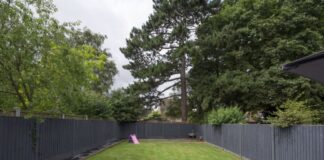Mounting the skirting board or floor plinth is the final operation of finishing the room. More responsibility and professionalism is required when performing this type of work. You can no longer hide the flaws in fastening profiles, so the right choice of method and fastening materials is very important.
When choosing fasteners and the method of fastening for your new skirtings, the main factors are the material of the walls and the type of skirting board. It is also important to pay attention to the manufacturer’s recommendations.
As a rule, their instructions contain very valuable instructions, following which even a non-professional can properly attach a floor skirting board. Today, the consumer choice is made up of various materials like MDF, plastic, and wooden skirting boards. We look at different methods of fixing skirting to the wall.
Mounting Methods
After choosing the right materials for your skirting board, there are different installation methods you can use:
Installation of plastic skirting boards with cable channel
The benefit of these products is that they are easy to join along the length and in the corners. For this, additional elements are selected according to color and profile. The plinth is cut at a right angle before joining.
To install products with a cable channel, self-tapping screws and plastic dowels are required.
- Cutting– Lay the skirting boards around the perimeter of the room. Cut them to length at the corners and where the length of the whole product is not enough, and they need to be built up.
- Removing inserts- Remove the inserts covering the cavity of the cable channel.
- Hole drilling– Place the plinth in the desired position and drill a hole with a puncher directly through the back wall of the cable channel to a depth equal to the length of the dowel.
- Fastening- Insert plastic dowels into the holes and screw the self-tapping screws into them. Don’t overtighten them, especially if the walls are uneven – the plastic can bend or even crack.
- Cabling- Lay the wires in the channels and install decorative elements at the corners and joints.
- Insert installation– Replace the cable channel covers. They should snap into place easily.
Clip Mounting
This installation method can be used for both plastic and wooden planks. Each manufacturer has its form of clips, but the principle of fastening is the same for all:
- The marking of the places for installing clips on the walls is done. The distance between them is usually made at about half a meter. But there may be other requirements that the instructions will tell you about.
- Further, as in the previous case, holes are drilled at the marking points, dowels are inserted into them, and clips are fixed with self-tapping screws.
- After laying the cable, the plinth snaps into place with clips. If necessary, it can be easily removed.
Installation of wooden skirting boards
Wood and MDF products often have to be fastened in an open way, drilling or punching through them. In addition to dowels, sometimes finishing studs with a small, almost imperceptible hat is also used.
The principle of installation is still the same: marking, installing dowels in holes in the concrete wall, screwing.
Glue mounting
Concrete is a very hard material. To drill it, you need a perforator with a drill bit. Not every home master has such a tool. And buying it to perform one-time work is too expensive – the price is not favorable.
If you have smooth walls, the plinth can be glued to them. To do this, use liquid nails. Glue is applied in a thick layer on the back surface of the plank, filling all the recesses. Then it is pressed against the wall surface with force and fixed in this position until the glue sets.
Conclusion
Knowing about all the installation methods, you can choose the one that matches the material of the products you have chosen and suits you in terms of complexity of execution.




















